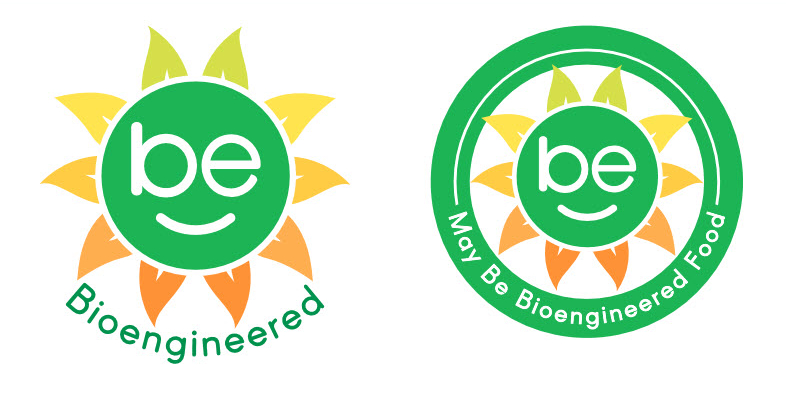USDA Proposes GMO Labeling Rules
But as they stand, they’ll simply sow consumer confusion—to Big Ag’s benefit
 On May 3, the USDA unveiled its long-awaited proposed GMO disclosure rule, which aims to provide food companies with guidance about how to label products made with genetically modified ingredients. Congress mandated standardized disclosure of GMOs in 2016. But implementation has been slow, due largely to a deluge of questions over which foods should be covered, and with what types of labels. To the surprise of many, the new 106-page proposed regulation effectively does away with the instantly recognizable nomenclature of “GMO” and “genetically modified,” and instead instructs companies to use a term that most consumers probably aren’t familiar with: “bioengineered.” This despite that facts that thousands of products lining grocery store shelves are currently labeled as “non-GMO,” and that GMO itself has become a household term. For an Orwellian twist, the proposed “Bioengineered”—or “BE”—USDA labels feature a brightly shining sun.
On May 3, the USDA unveiled its long-awaited proposed GMO disclosure rule, which aims to provide food companies with guidance about how to label products made with genetically modified ingredients. Congress mandated standardized disclosure of GMOs in 2016. But implementation has been slow, due largely to a deluge of questions over which foods should be covered, and with what types of labels. To the surprise of many, the new 106-page proposed regulation effectively does away with the instantly recognizable nomenclature of “GMO” and “genetically modified,” and instead instructs companies to use a term that most consumers probably aren’t familiar with: “bioengineered.” This despite that facts that thousands of products lining grocery store shelves are currently labeled as “non-GMO,” and that GMO itself has become a household term. For an Orwellian twist, the proposed “Bioengineered”—or “BE”—USDA labels feature a brightly shining sun.
“It’s almost a little smiley face,” George Kimbrell, legal director for the Center for Food Safety, told Sierra. “We would support a little circle that said ‘GE’ or ‘GMO’—something neutral that’s not pro-biotech propaganda.”
To further confuse things,, the label won’t necessarily appear in the form of a standardized icon, like the USDA organic label. Food companies will have the option of including a sentence-long declaration on packaging—such as “Contains a bioengineered food ingredient”—or a QR code that directs shoppers to a website for more information about a product’s bioengineered contents. Of course, access to QR-coded intel requires a smartphone and reliable broadband connection. “USDA’s own study found that QR codes are inherently discriminatory against the one-third of Americans who do not own smartphones,” Kimbrell said, “and even more so against rural, low-income, and elderly populations, or those without access to the internet.”
Even for those who grocery-shop with smartphone in hand, the extra step the QR codes impose can hardly be described as simple, meaningful labeling. “I think there’s a question as to why at this point the USDA is choosing to consider new terms, other than GMO or GE, and other forms of labeling,” said Sophia Kruszewski, senior policy specialist with the National Sustainable Agriculture Coalition. “Especially since, in recent years, many companies have responded to consumer desire for transparency and started voluntarily labeling their products. [GMO disclosure] doesn’t seem to pose an enormous challenge.”
Despite concerns about consumer confusion and transparency, food and consumer advocates were largely happy to see the rule finally move forward. “The 2016 statute was the culmination of 25 years of work by a lot of people in the food movement seeking to join ranks with the 64 other countries that already have rules about disclosure of genetically engineered products of food,” Kimbrell explained. “The Department of Agriculture has been late releasing this, and this proposed rule basically sets out a number of different options that beg for comment—there’s a very wide range of outcomes that could come out of this.”
One major question left unanswered in the current proposal is whether “highly refined” GE foods will be covered. These include cooking oils, candies, sodas, and other food products that contain ingredients derived from genetically modified crops. “Most genetically engineered foods on the market are not whole foods; 70 to 80 percent are processed from Big Ag commodity crops such as corn, soy, and sugar,” Kimbrell said. “Without labeling these foods, you don’t have much of a meaningful standard.”
The USDA’s proposal also neglects to address the question of whether or how to label foods produced via newer forms of genetic engineering, including synthetic biology, gene-editing, and CRISPR.
While there is scant evidence showing that genetically modified crops pose a risk to human health, consumers are increasingly demanding disclosure of GMO ingredients—often for environmental reasons. “GMOs are a major cog in industrial ag operations, and the vast majority of them are not engineered to do the public any good, but instead to be resistant to pesticides,” Kimbrell said. “Many are made by pesticide companies such as Monsanto and Bayer, and they’ve dramatically increased our use of pesticides.”
NSAC’s Kruszewski reminds concerned consumers that the USDA Organic label remains a reliable indicator that no genetically modified/bioengineered ingredients are contained in a food product. “This is a time for concerned members of the public and organizations to voice their concerns about consumer confusion and other aspects of this rule,” she said.
The USDA is seeking public comments on its proposal through July 3. The GMO disclosure rule could go into effect as early as this summer. “This is a call to action for all Americans who have waited for decades to finally have genetically engineered foods labeled,” Kimbrell said. “Now is the time to tell the Trump administration to do the right thing and meaningfully label these foods.”
This article has been updated since publication to correct the USDA public comment period.
 The Magazine of The Sierra Club
The Magazine of The Sierra Club




